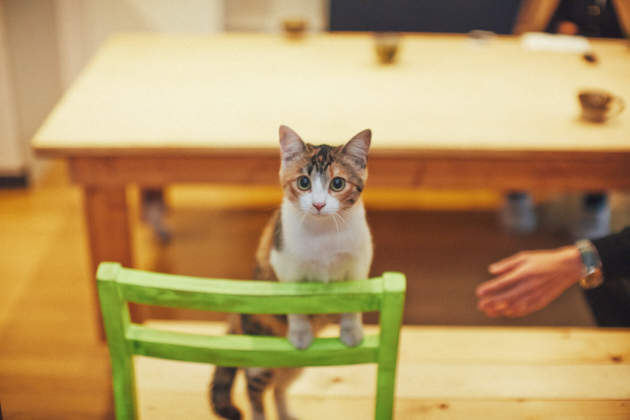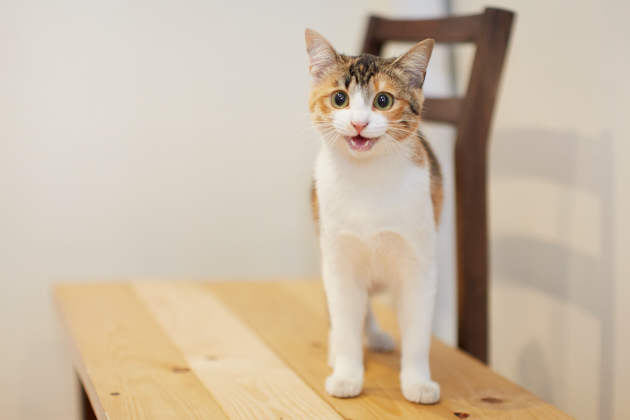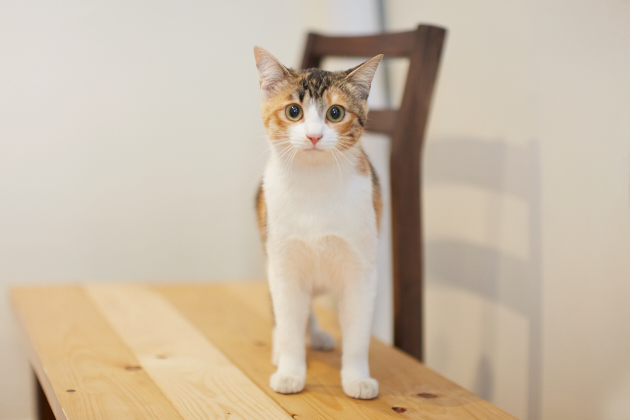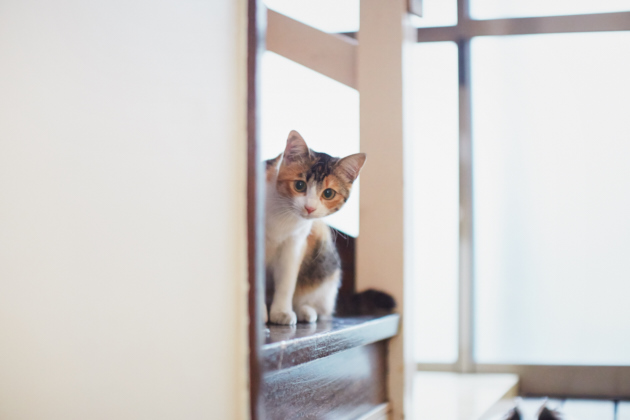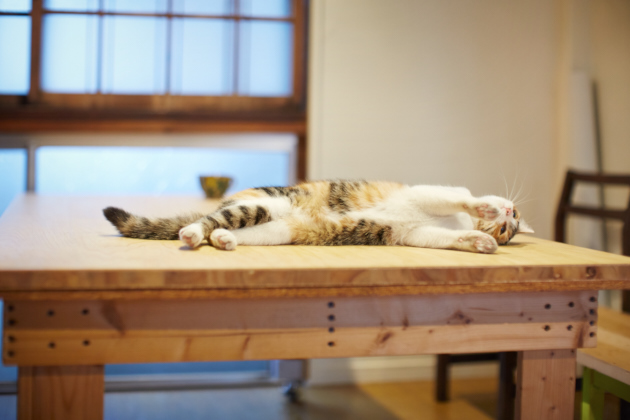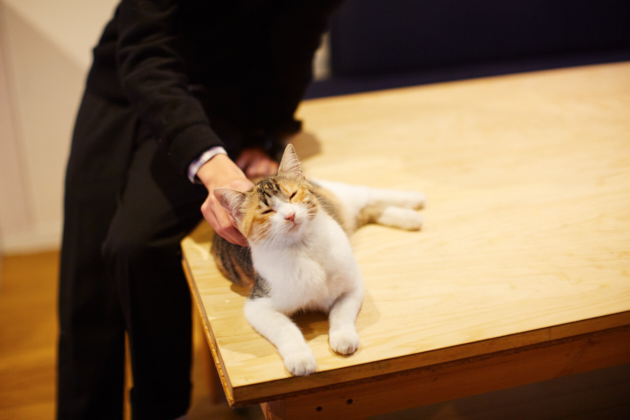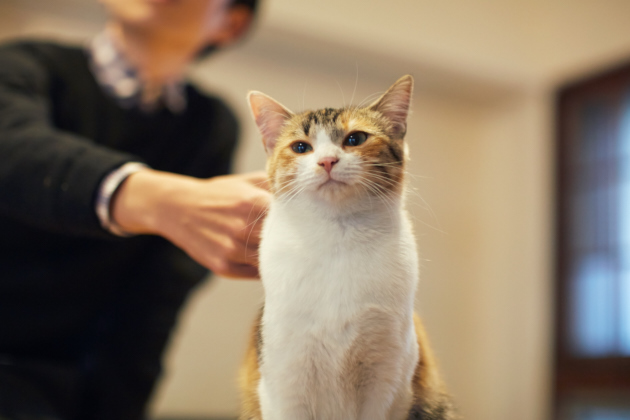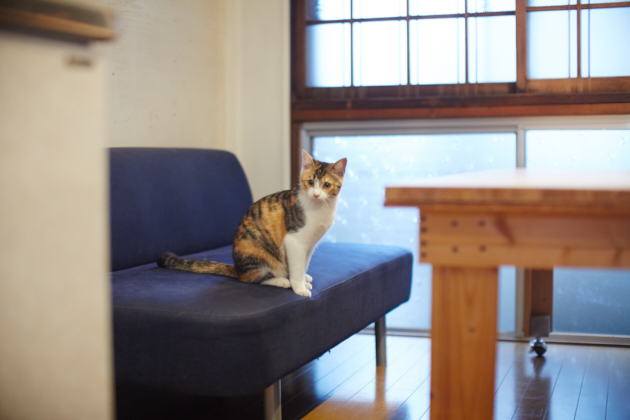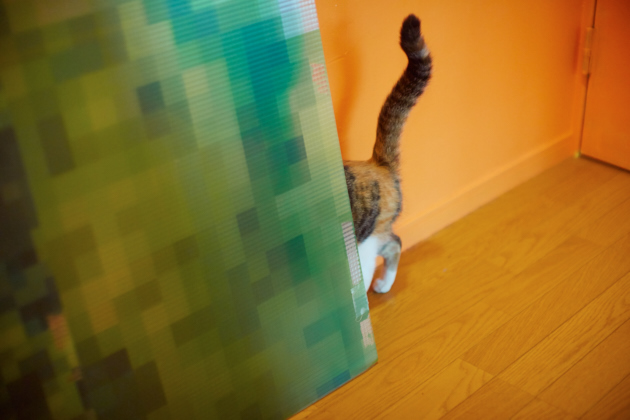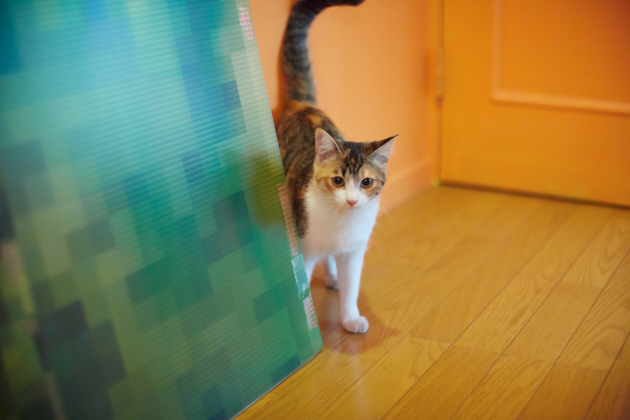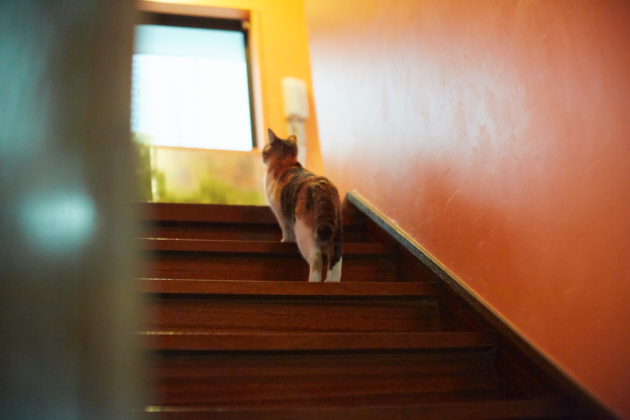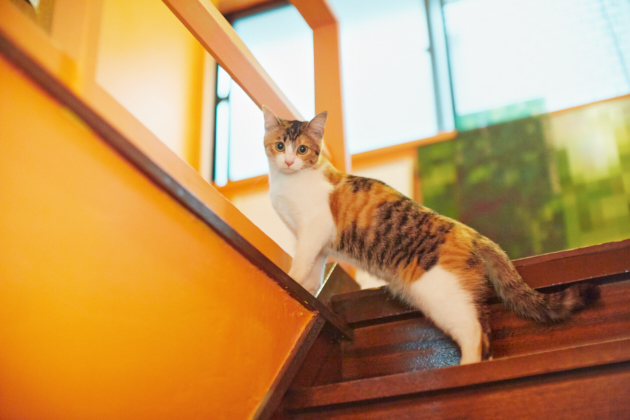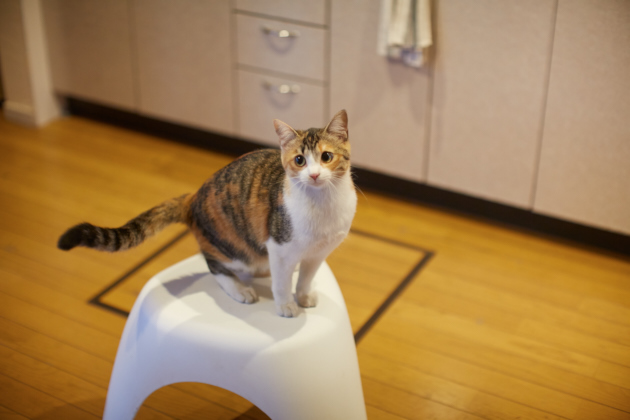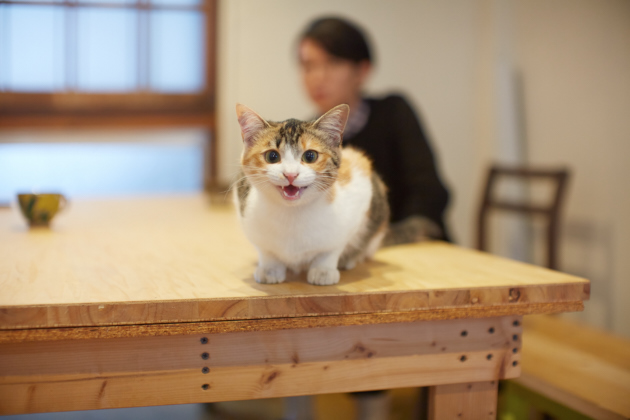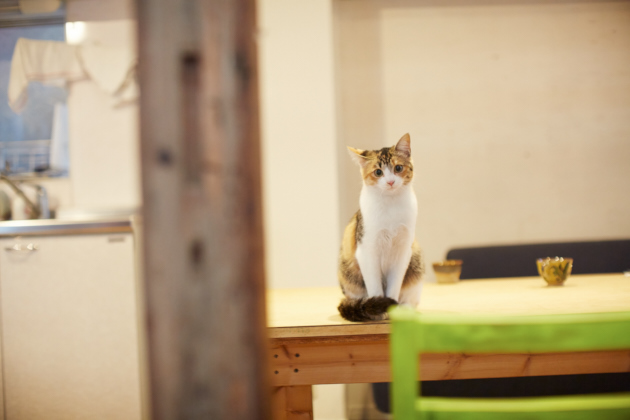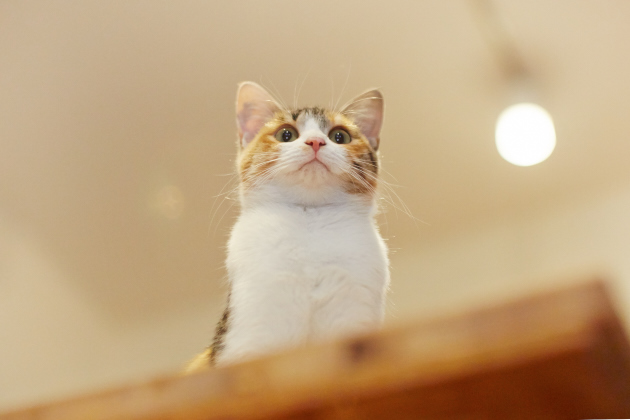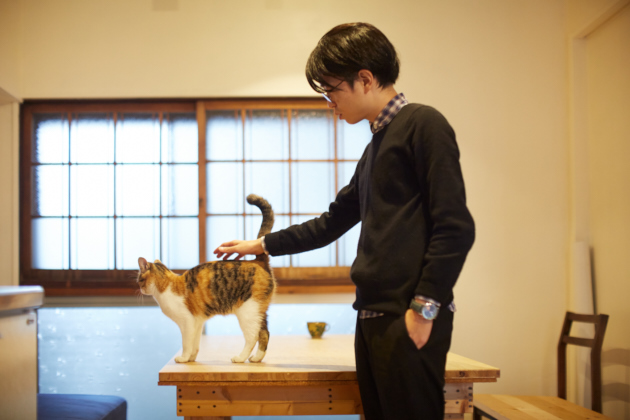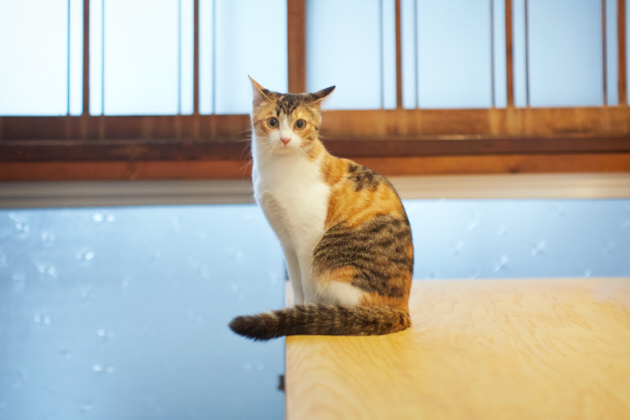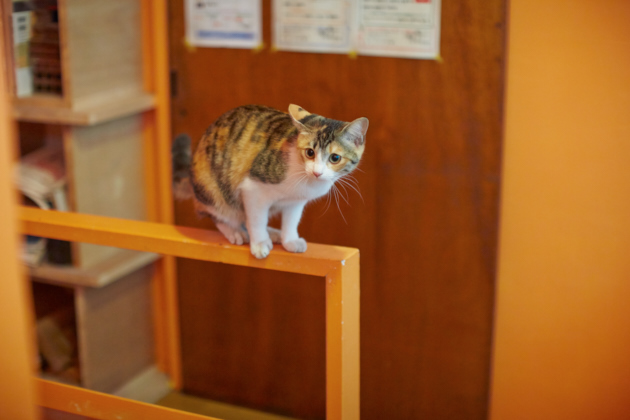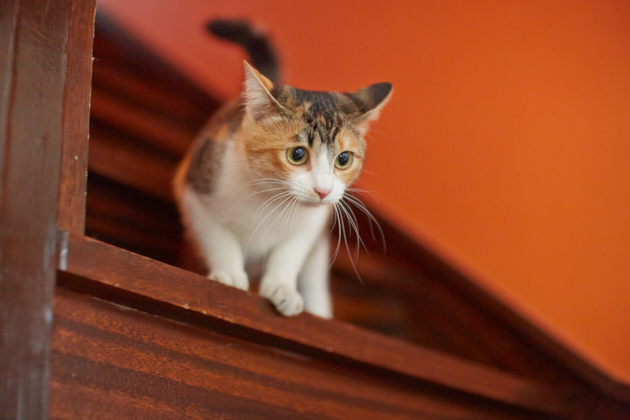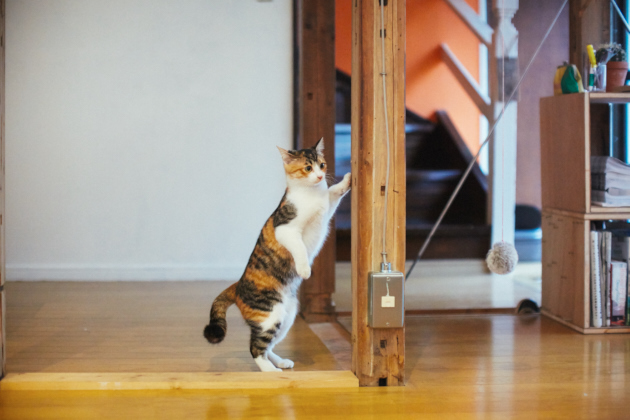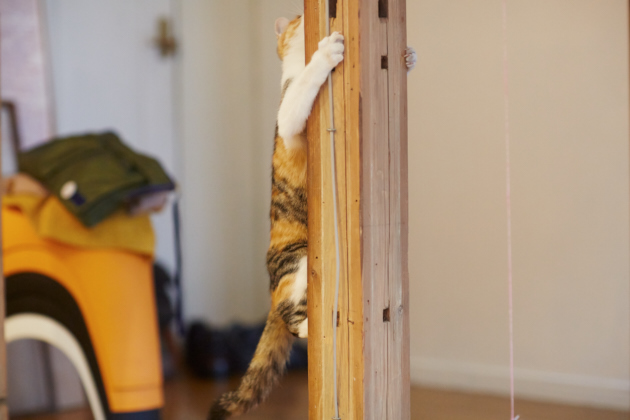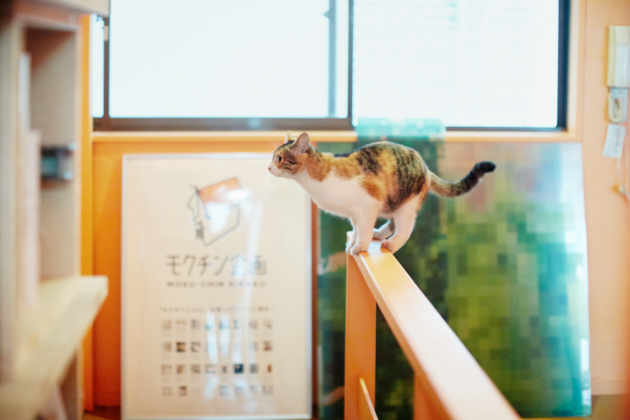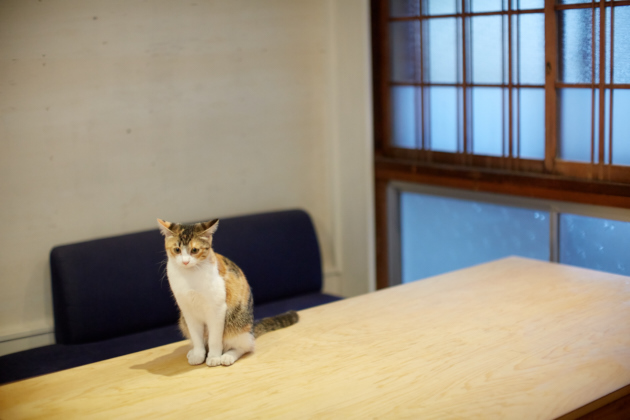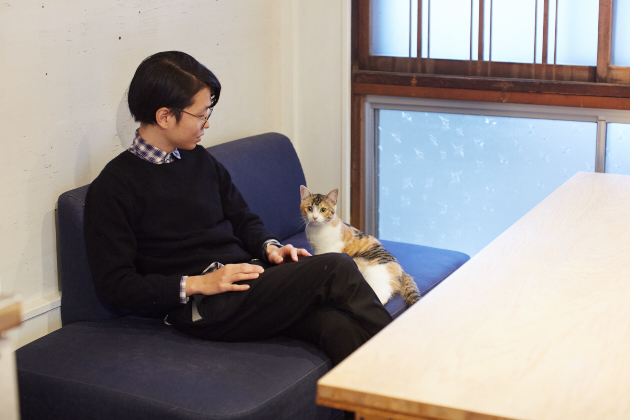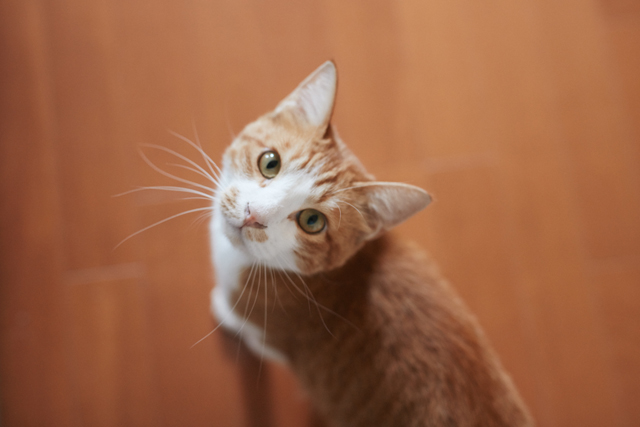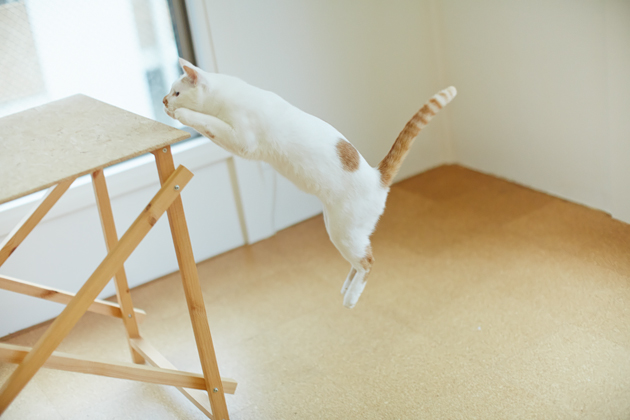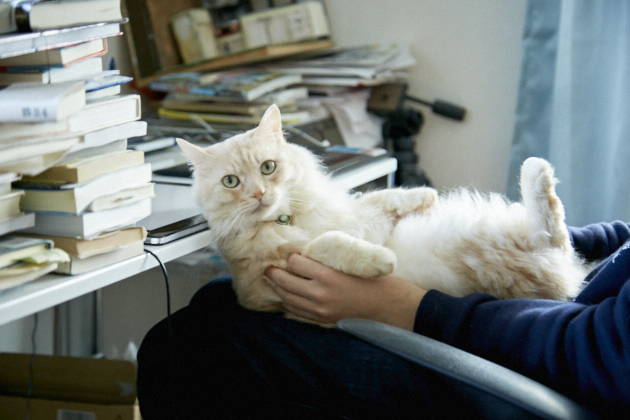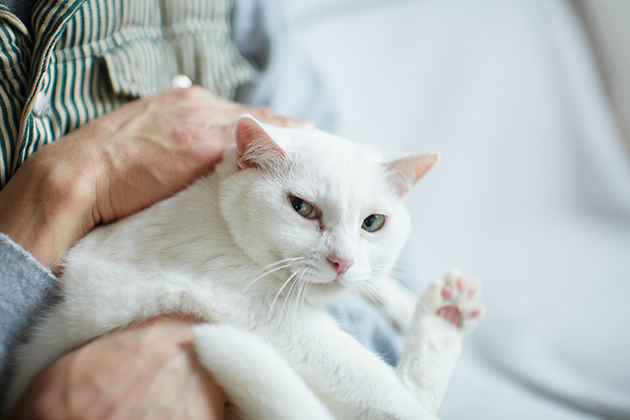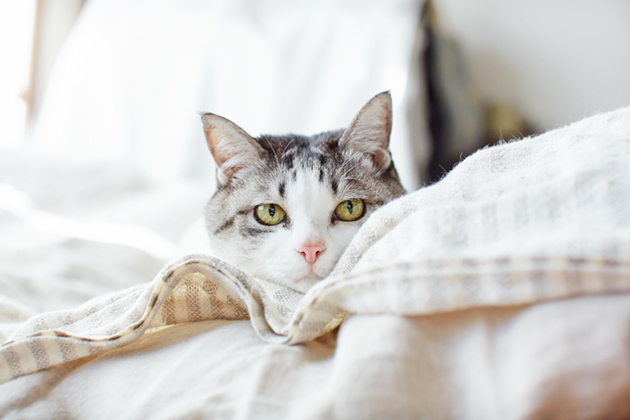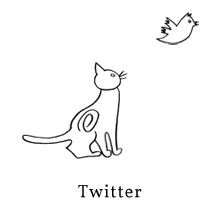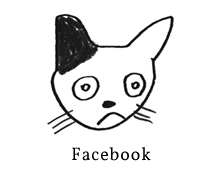Through projects such as ‘Mokuchin Kikaku,’ which involves the renovation of old wooden apartment buildings, the young architect Yūtarō Muraji is attracting much attention these days. Inside Muraji’s home office, he now lives alongside a female cat named Hatty. In an industry dominated by dog-lovers, Muraji happens to be a rare cat-lover. He says that he’s been this way his whole life. We interviewed Muraji about the new relationship between housing and cats, which he has discovered through his life with Hatty.
Are most architects really dog lovers?
- Where did you originally encounter Hatty?
“One day I came upon some newborn kittens in the garden of the university. Someone had already stepped forward to take two kittens, but three of them remained. I chose the weakest-looking of the three because I didn’t think it would survive without my help. And that was Hatty. As a child, I used to sneeze like crazy whenever I visited homes with cats. So even though I loved cats, I wondered if it might not be difficult to care for a cat of my own considering my apparent allergy. But after doing a bit of investigation, I discovered that the cause of my sneezing back then might not have been cats – it could have been fleas or ticks. So I took her in and decided to give it a try. And though I was sneezing at first, it soon went away.”
- You use this house as both your home and your office. With the garden and everything, it seems like this is a confortable living environment for a cat.
“It certainly is. The town of Kamata has a lot of stray cats, too. There is one stray cat we call ‘Gyū-chan, with black spots on white fur. He brings dead rats into our garden every now and then. Maybe he is trying to make moves on Hatty.’”
- What kind of character does Hatty have?
“She has her own way about things. She’s never afraid of strangers. She’ll even interrupt meetings sometimes by climbing up on the table and laying down on the documents we are discussing. (laughs)”
- When we did an article on the exhibition ‘Architecture for Dogs’ by Kenya Hara(https://ilovedotcat.com/ja/9527), we got this impression that most architects tend to prefer dogs over cats. We thought that perhaps professionals who do their work indoors, like musicians and writers, tend to prefer cats while people who work outdoors, like architects, tend to prefer dogs.
“Is that so? I don’t feel that’s the case when I look around me. As for myself, the suspected cat allergy was what kept me away from coming in contact with cats when I was a kid. So Hatty is my first cat. And honestly, I’ve never really liked animals that much in the first place. I don’t think that I’m good at taking care of things...”
- Then why did you decide to get Hatty?
“Well I did like cats. When I was busy starting up my own office and feeling a sense of instability about the future, I often found myself thinking about getting a cat. And that was when I met Hatty. Moreover, I was working on the wooden apartment renovation project back then, and this structure was originally one of the buildings I was requested to renovate. I hit it off with the owner quite well and ended up just doing the minimal amount of work to turn it into our office. When it’s an old property like this, we are usually allowed to renovate it however we like. So in that sense, there were no concerns about whether or not I could have a pet, so I went ahead and got her.”
- How did you come up with the name ‘Hatty’?
“Her real name is actually Harriet. I had lived in England for a while, so I asked my good friend from back then to think of a British-sounding name for her. He is a teacher, and he had three students whose names were Harriet. The interesting thing is that all three Harriet’s had completely different personalities. I thought the multiplicity of the name sounded very cat-like, and I picked Harriet from among several names he had given me. So Hatty is her nickname.”
- What is your life like with Hatty?
“Living with a cat is much more therapeutic than I had imagined. You see, if I had a dog, I would have to take it for walks. Having someone else take up my time is a stressful thing for me. Cats don’t need that kind of care at all, so that makes it easy for me. That said, I had previously imagined cats would be more independent. But to my surprise, they also want attention. It’s just about the right frequency, though - so I don’t feel overly burdened.”
A cat with different faces for day and night
- What is the biggest change you’ve noticed since Hatty came into your life?
“I have much fewer things laying around the place. I used to have a vase on my desk, but I put that away because she’d knock it over. I now put kitchen utensils away right after I’m done using them, too. Because I had earlier thought that I was allergic to cats, I used to mop up the floor everyday. So I guess I’m a bit more tidy than I used to be.”
- Has living with a cat caused you to make any new discoveries?
“I discovered that my cat has different faces for day and night. During the day, she moves sharply and her face somewhat reminds me of a clown. At night, her pupils get larger and she takes on a different air - like she’s a cute stuffed toy. Her mood swings are rapid. One moment she’ll run around all excited, and the next moment she’s on my lap fawning. I never quite understand what she’s thinking. (laughs)”
- How would you describe your relationship with Hatty?
“Well she sometimes acts like a little sweetheart, and other times it’s as if I don’t even exist. I guess I can’t really verbalize it well yet, since it’s been only a short while since we started living together. But I can say it’s a very relaxing relationship, at least. One thing I am concerned about, however, is whether or not being in the same house all the time is boring for her. Sometimes I get worried that maybe I don’t play with her enough. I go out quite often and am not always at home. I wonder what kind of impact living pretty much the same life in the same house will have on her mentality. Do cats become bored? Since I’ve only lived with human sensibilities all of my life, I can’t really tell what would be best for each other – considering I’m living with a strange animal who can’t communicate through language. I am concerned about these sorts of things.”
- What kind of charm is unique to cats?
“Their forms… the movements of their joints are so beautiful that I can’t help but watch them. Also, she is round and all cute one moment, and the next moment she’s looking sharp and standing tall in a somewhat divine pose… and showing a completely different aura. I get fascinated with the way her body moves in a variety of ways.”
For the purpose of living with a cat…
- Has there been any change in your housing situation since you started living with Hatty?
“I bought some wooden boards thinking that I should maybe build a catwalk. However, she seems to be having plenty of fun just running around the stairs and all. So I guess I don’t have to go through the trouble of building one. I haven’t started thinking much yet about how I would refine the space for her. However, that’s another project I’m looking forward to.”
- Considering the increase in the number of pets, there doesn’t seem to be enough housing that allows for them.
“With the ordinary rental agreements of today, it seems difficult to have pets unless you arrange for a specific condition in the agreement. Society tends to set more and more rules to prohibit pets at the agreement stage. However, there are many houses out there that do not try to completely control pets, like the one I’m living in now. So, I think it is more important to get these houses out to the market, rather than to think about setting new rules to increase the amount of housing that allows for pets. I think what is necessary is to build a society that works based on trust.”
- Even with housing that allows for pets, some owners specify only small dogs and no cats - because cats scratch on walls.
“I think they worry too much about living neatly. Not all housing must look brand-new. Old housing has its own charm. And if the walls and windowsills are a bit dirty, you wouldn’t mind letting your cat add some new scratches. It’s no longer damage any more - but a kind of taste. We should take advantage of the accumulation of history within a house. This is what I learned from the ‘Mokuchin Kikaku’ project. However, no matter how hard you try to make an old house look brand new, you are not going to beat a real new house. That is why we try to bring out and maximize the charm in old houses. If we tried to make a space maintain a brand new look, it would be hard to have any animals there.”
- Indeed, not all people want to live in a room surrounded by brand new white wallpaper.
“Japan has an overly-developed service industry. Whether you eat out or buy something, the cleaner something is the better it is considered to be. We are in an environment where we are always provided with new stuff. But slowly, I think this is starting to change. I don’t think we can survive with the idea of ‘brand-new-is-best’ anymore. I feel there is an increase in ideas regarding new ways of living. I have been offered some projects related to housing that permits pets. I hope to be able to show off some new ideas in the near future.”
